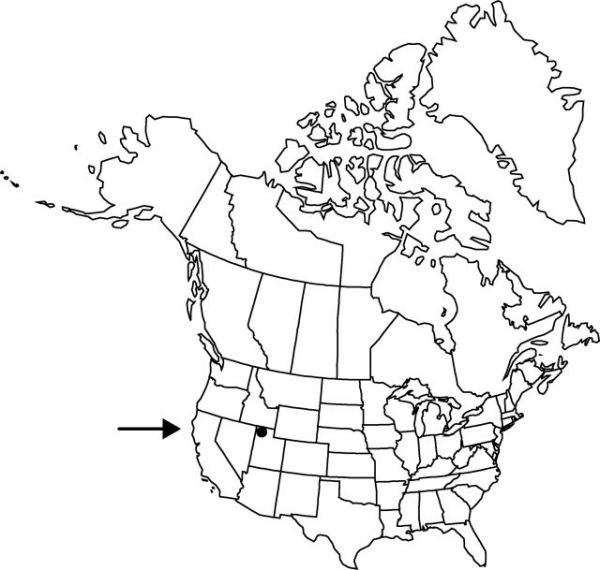Allium passeyi
Brittonia 26: 309, figs. 1, 4. 1974.
Bulbs 2–3+, not rhizomatous, ovoid, 1–2 × 1.2–2 cm; outer coats enclosing 1 or more bulbs, light brown, reticulate, fibrous; inner coats whitish to light brown, cells vertically elongate and regular or obscure. Leaves persistent, green at anthesis, 2–3, sheathing; blade solid, flat, ± falcate, 10–20 cm × 3–6 mm, margins entire. Scape persistent, solitary, erect, terete or ± winged-angled, mostly 10–20 cm × 1–2.5 mm. Umbel persistent, erect, compact, 8–27-flowered, hemispheric-globose, bulbils unknown; spathe bracts persistent, 2–4, mostly 1-veined, ovate, ± equal, apex acuminate to caudate. Flowers campanulate, 7–9 mm; tepals erect, light pink, narrowly lanceolate to lance-ovate, becoming callous-keeled, persistent and permanently investing capsule, margins entire, apex acuminate, inner shorter and narrower than outer, outer strongly keeled and gibbous at base; stamens included; anthers yellow; pollen yellow; ovary obscurely crested; processes 6, central, ± erect, rounded, minute, to 1 mm, margins entire; style linear, equaling stamens; stigma capitate, scarcely thickened, unlobed; pedicel 10–18 mm. Seed coat shining; cells smooth, each with minute, central papilla.
Phenology: Flowering Jun.
Habitat: Shallow, stony, lithosolic soil over dolomitic limestone, hilltops
Elevation: 1400–1600 m
Discussion
Of conservation concern.
Allium passeyi is known only from Box Elder County.
Selected References
None.
